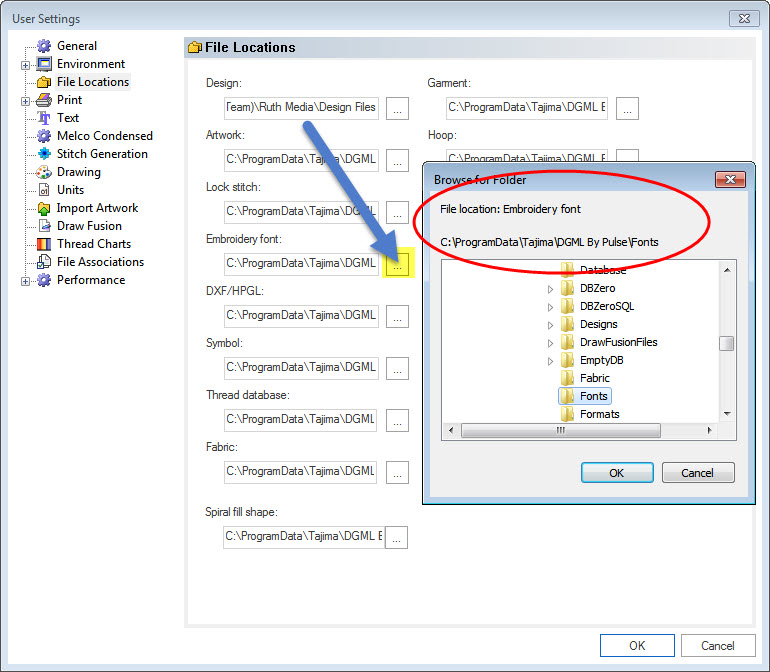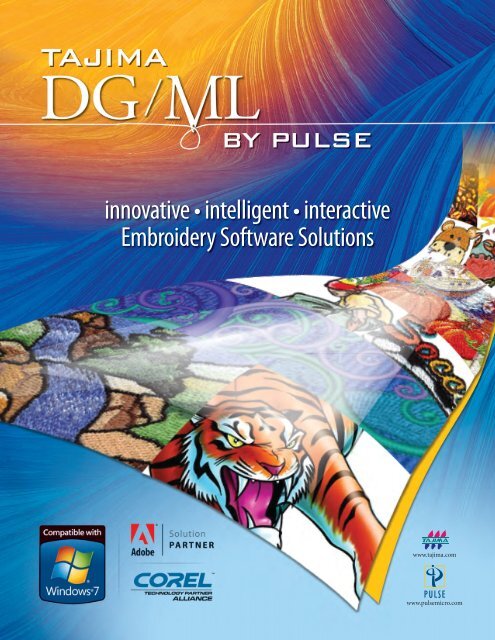
The thread is fed up through the hole, and then on through the normal thread path. It's not pretty, but it works quite well.Īnother popular method is to punch a small hole in the bottom center of a styrofoam cup, and place it upside down over the thread cone. The flexible joint allowed the straw to easily bend downward thus providing a smooth passage for the thread. You can also attach a flexible drinking straw from the thread tree downward towards the cone of thread. It involves attaching a plastic drinking straw to the front of the thread tree, extending outward toward the tensioners. These tubes not only reduce the twisting of metallic thread, they also provide a smooth passage and prevent it from catching on an adjacent thread or any other surface for that matter.įor older machines, you can create a similar solution. One of the features of many new embroidery machines is plastic feed tubes that stretch from the thread trees to the first set of tensioners. With this in mind, it's important to find a way to either eliminate or reduce the kinking affect. Thus, it lends itself to kinking and twisting as it goes through the path from cone to needle, which invariably leads to the thread getting “hung-up” along the way, which in turn causes a thread break. Essentially, it's a lightweight cotton thread surrounded by metallic foil. Metallic thread can be a challenge to deal with.

If you stick with these rules, you will find that most of your cap challenges will disappear As you will find, not every style or brand of cap is a good candidate for your particular cap frames. Some people even remove the bill from the crown (of a test cap), then place the curved portion that was attached to the crown against the cap frame to ensure a good fit. The best test for fit, is to match the curve of the base of the crown (where the bill meets the crown) to the curve of your cap frame. If not, then you will be forever destined to have cap quality problems. If you have to force the cap to hoop it, chances are it doesn't fit the frame properly. It's smaller than 2.25” X 4.50”, but it gets them thinking. In fact, use a business card as a size reference for your customers. Sure, some caps can go larger, but if you always work within these parameters, you will be assured that the design will fit. It's not a jacket-back! Limit designs to 2.25” high by 4.50” wide and you will go a long way towards overcoming cap sewing problems. All too often, you try and put too much embroidery on the cap. There are two basic rules for successful cap embroidery: The embroidery is crooked or slanted or puckered or whatever. Anything more is questionableĮmbroiderers are constantly complaining about sewing on caps. If you stick with these parameters, then you should be able to maintain your stitch quality while resizing. Don't be afraid to experiment, but also don't assume that what works for one design will work for all designs. However, depending on the characteristics of the design, you may find that you can resize to a moderately higher percentage than 20%. With this type of file, no more than 20% scaling should be attempted. But you still have the problems of stitch types needing to be converted, and details not being consistent with the design size. When resizing this type of file, the density will change in proportion to the amount of resizing. cnd) does not have the physical stitches locked into place. The golden rule here is no more than 10% resizing.Īn outline file (such as. Resizing does not add or remove stitches which means the existing ones are either pushed together or pulled apart. psf, etc.) already has the physical stitches locked into place.


In fact, most Digitizers would re-punch the design from scratch when making a radical change in size, rather than just trying to edit the design to fit.Īnother angle to consider in the resizing game is what type of file you are dealing with, outline or stitch? A stitch file (such as. A fish that goes on a jacket-back has much more detail than one that goes on a hat. Some of them will need to be changed to fills.Ī Digitizer always takes into consideration the sewing size of the design when punching it. In addition, satins become wider, possibly too wide to sew properly. When enlarging a design, you start to gain large open areas with very little detail. Also, many of your fill areas need to be changed to satins. In the case of reducing a large design, you start merging together stitches as it gets smaller resulting in a loss of visual detail, thread breaks and needle breaks. The problem is, you're dealing with physical stitches, not graphical elements. Though your computer will allow you to freely resize a design to virtually any dimension, that doesn't mean you can actually embroider it.


 0 kommentar(er)
0 kommentar(er)
